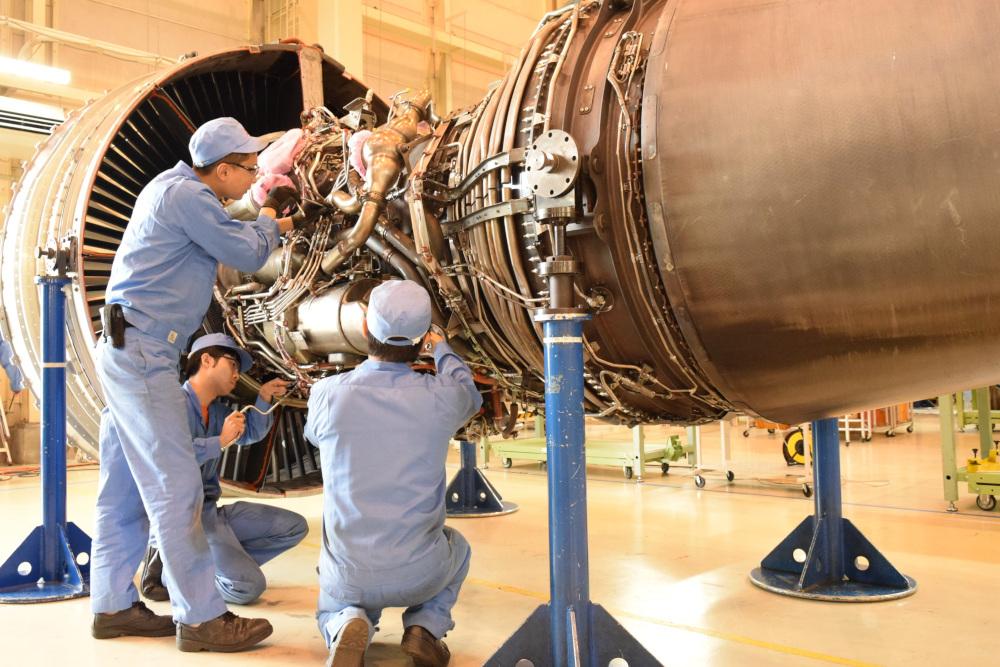
Japan’s daily domestic flights are now slightly above pre-pandemic levels, but international flights, including cargo, are still barely a third of 2019 levels according to flight tracking tool RadarBox,
Given this reality, it is probably too early to say that the country's MRO providers are seeing a noticeable maintenance demand recovery. This is certainly the case for Okinawa-based MRO Japan, explains Takashi Shimamura, the company's vice president of business development and marketing.
Yet since there is now a relaxation of border restrictions in Japan and a recovery in air travel inside the country, an uptick in maintenance demand is at least foreseeable at Japan’s airlines, which will lead to changes in demand from outside shops.
Further, MRO Japan has recently observed two positive tendencies among its customers. “First, our customers are again ordering some additional work that is not mandatory for periodic maintenance requirements, such as cleaning of aircraft,” Shimamura says.
A second tendency, he says, is that Japanese airlines are more interested in performing heavy maintenance in Japan because the Japanese yen has been weakening.
In the last year, the yen has lost about a fifth of its value against both the U.S. dollar and Chinese yuan. “It will become very costly for airlines if the trend continues, and we are trying to take this opportunity to enlarge our activities,” Shimamura says.
Another opportunity arises from the partial reopening of the borders for tourists in Japan. “Naturally, foreign carriers are coming back to Japan, and we are restarting our conversations with these potential customers too,” Shimamura says.
Prior to the pandemic, MRO Japan was seeking to obtain EASA Part 145 approval, but the pandemic forced a long delay in the approval process. “However, we have finally undergone the on-site inspection at the end of May,” Shimamura says. “If the rest of the procedures go as scheduled, we are estimating obtaining approval around October 2022.”
EASA Part 145 approval will allow MRO Japan to expand its business opportunities. “We are keen to work on this and take advantage of our new capability,” says Shimamura.
Progress is also being made on another front. Takuma Otsuka, manager of spare part planning materials, says the part procurement cycle has been getting better recently. “It seems manufacturers and suppliers have come back poco a poco [little by little], even if it is slower than in 2019 before the COVID-19 pandemic,” says Otsuka.
Although procurement is generally getting back to normal gradually, MRO Japan reports some difficulties in obtaining specific parts due to the shortage of raw materials.
Otsuka says the stock levels of materials at suppliers have not yet recovered to the levels expected before COVID-19. “Therefore, we may have to consider longer lead times to obtain required materials, which is challenging, and we anticipate this difficulty will last for a while,” he says.
From a logistics point of view, Otsuka says parts obtained from Europe take more time now, because flights from Europe to Japan have been reduced due to restrictions on flying over Russia. He “hopes to get back to normal soon.”
Hiroki Saryo, spokesperson for Mitsubishi Heavy Industries Aero Engines, says MHIAEL is seeing a recovery in aircraft engine maintenance demand. So far, “It seems that especially freighters have high demand, for CF6s, PW2000s, PW4000s and so forth. Passenger [aircraft] should follow,” says Saryo.
MHIAEL is also having difficulty getting some engine parts when needed. Saryo believes this is mostly due to shortages of manpower at manufacturers and supplier companies, after layoffs due to COVID-19. Workers have returned, but not yet in sufficient numbers, so obtaining some parts is still risky.




